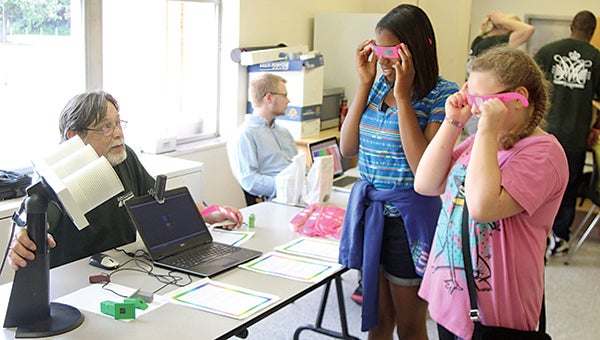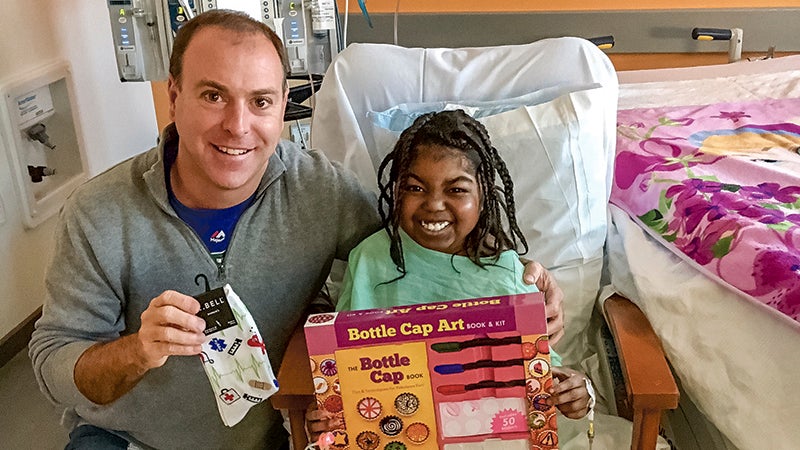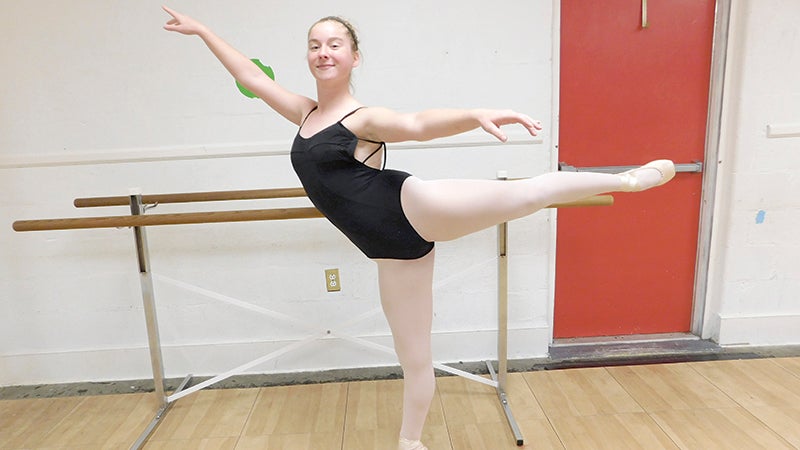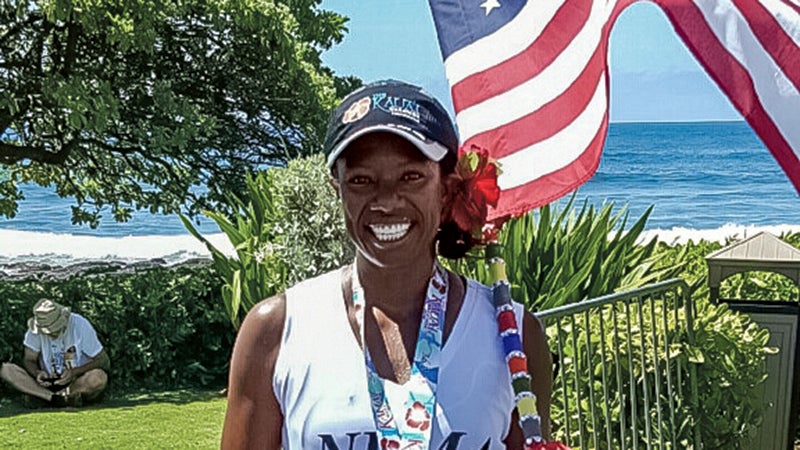Science fair opens minds
Published 8:26 pm Thursday, July 16, 2015

During a science fair held at John F. Kennedy Middle School for children with the Suffolk unit of the Boys and Girls Club of Southeastern Virginia, Brandt Robertson, a lab specialist with the College of William & Mary, opens the eyes of Michela Brown and Kelsie Lytle, both rising seventh-graders at JFK, to different wavelengths of light.
Most days, Holland resident Amy Wilkerson drives to the College of William & Mary in Williamsburg, where she is the laboratory and research manager.
But on Wednesday, she found herself at John F. Kennedy Middle School.
The funny thing was, Wilkerson was still surrounded by William & Mary staff and students. They were there to present a science fair for students from the Suffolk unit of the Boys and Girls Club of Southeastern Virginia.
The William & Mary cohort was supported by contingents from Norfolk State University, Old Dominion University and the Nansemond River Preservation Alliance.
It’s the second such annual event organized by Wilkerson, who has been helping out with the Boys and Girls Club in Suffolk for about four years.
“I want them to get excited about science,” she explained. “I want them to say, ‘Hey, that’s something I can do.’”
Wilkerson said it’s harder for smaller or more rural localities like Suffolk, that don’t have universities, to organize such enrichment opportunities.
“In Suffolk, we are still rural,” she said. “I want to let the kids of Suffolk have the same opportunities. I have been fortunate that we have had support.”
Students were exposed to technologies, presentations and activities they don’t get to experience in the classroom or in their everyday lives, such as a 3-D printer, a vacuum chamber and different solar cells.
Brandt Roberston, a lab specialist at William & Mary, showed different wavelengths on the light spectrum.
“They are seeing the elements of the light itself,” Roberston said.
“It’s great, because they learn something different,” he said of the science fair. “They are kind of fascinated — especially with the 3-D printer.”
At the 3-D printer, Reed Beverstock, a William & Mary graduate student, threaded colored plastic filament through the MakerBot’s printing head.
He and Benjamin Kincaid — a college senior — had a rapt audience in sisters Zeyanni and Ziaijah Johnson, of Mack Benn Jr. Elementary School, Ayanna Alston, a rising third-grader at Nansemond Parkway Elementary School, and Tymaia Zyaire, visiting from Washington.
It probably helped that the machine was turning out Tyrannosaurus rex and Hello Kitty figurines.
“It’s literally the newest technology out there on the market that’s filtered its way to more of a common level,” Beverstock said.
“They are always very excited about it, and we try and show them how this process of manufacturing is a large step above the old method. It’s a lot less waste, and a more-targeted approach.”
NRPA volunteers demonstrated how a watershed works. Cindy Pinell said it teaches how human activities like fertilizing the lawn can add up to have an impact on our waterways.
“A lot of the kids don’t understand how close the watershed is to them,” she said.





